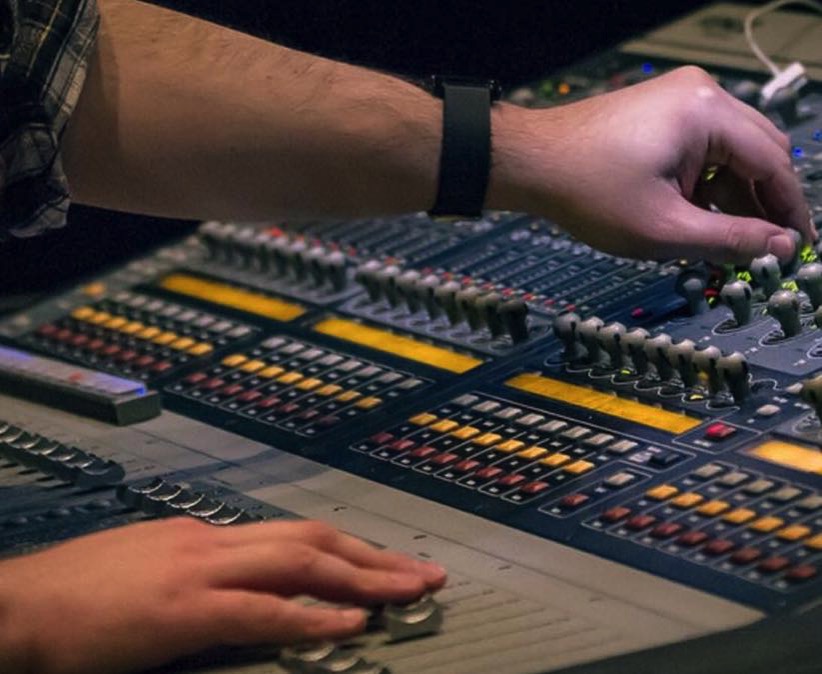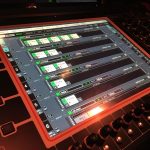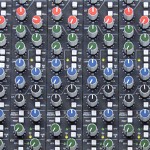
What Comes First? EQ or Compression?

Should you compress or EQ first?
It’s an ongoing question for a lot of engineers, and it’s something I’ve seen preoccupy a lot of newer engineers. I’ve probably addressed this a little before, but the inspiration for what I have to say today came from recently watching an engineer struggle to dial in a vocal as he tried a variety of approaches.
There are pro’s and cons’s to either approach, but I think sometimes part of the trouble in this question is engineers approach compressing or EQ’ing first as if there is a right or wrong answer. There isn’t one, though.
What if there’s a different way to look at this, though, so let me ask you a question:
If you have flexibility in your signal flow, do you hear tonal issues first or do you hear dynamics issues first? What jumps out at you the most?
99% of the time it’s tonal issues that bother me the most, so I deal with those first. I’ll move or change a mic, and then I reach for the EQ if necessary. Dynamics issues don’t usually bug me until I hear things playing together so I don’t usually touch compressors much until everything is going.
The issue I saw watching that engineer was he was just stabbing in the dark at what to do. He knew he needed to do something, but he wasn’t listening to things and approaching his choices based on what he was hearing. He was just playing mixing roulette. Maybe I’ll compress. Maybe I’ll EQ. Maybe I’ll compress again. And when things didn’t work, he’d just start over with a different approach.
I believe a key to mixing is learning how to listen and evaluate what you’re hearing. If you hear something and know it needs work but can’t identify what you want to be different, you are not a mixer, yet. And that’s OK! You have to start somewhere, and it can be daunting when you have a lot of options in front of you. It’s easy for anyone to get overwhelmed.
So don’t worry or panic or stress. Just start with one thing. You can even give yourself a checklist or series of questions to work through if that helps. Personally, I like to take the thing that jumps out at me the most and start there making sure every step is improving things.
Of course the plot can get a little thicker on what should you do first. Compressors sometimes alter the tone of things. If you get your EQ set and throw on a bunch of compression, you might find yourself wanting to EQ again. Conversely, the tone of what’s being sent to the compressor may affect how the compressor works. So if you EQ, and then compress, and then go back to your EQ, your compressor might change things making you EQ again and putting you in a processing spiral as you whittle away at both.
So, I guess in some ways the question of whether to EQ or compress first is kind of a chicken and egg thing. When you are doing both to a signal, they both may affect each other in a sense which is why this can be such a difficult question to get a straight answer on. So start with what sticks out at you first. If things don’t work, switch it up if you can which leads to another part of the challenge.
Part of figuring out what to do first is learning how your gear reacts. There are places in my mix where you’ll see compressors first and places in my mix where you’ll see EQ first. How I arrived at those different decisions came from trying things over the years and learning what made the gear I use operate best along with what worked best for my workflow. In most cases, the EQ comes first for me, but it’s not a rule. It took time for me to learn what works for me, though.
There’s one other part of this that I’ve learned, too. No matter what I put first, my mixes still essentially sound like my mixes. So choosing to put EQ or compression first sometimes really just comes down to what I know from experience will get me a result in the fastest and easiest way.
So, if you have a choice and don’t know what to do first, start with what is jumping out at you first because for me those are generally the bigger issues, and I rarely have gone wrong fixing the big issues first. And if nothing jumps out at you, maybe, just maybe, you don’t need to do anything at all. Don’t forget that we don’t need to process every input that comes in. You aren’t any less of an engineer just because you didn’t turn every knob available.
Do you have a preference on whether to EQ or compress first? Leave a comment and let me know.

 Previous Post
Previous Post Next Post
Next Post



I think it was easier starting out on an analog desk with no compressors, gates, etc. Like you, tones typically bother me more than dynamics; and I learned to solve issues with limited EQ and riding faders. At the time, I didn’t know what I was missing – and I’m still glad I didn’t have it. Don’t get me wrong, I want that stuff now, but I don’t need it.
I typically EQ before compressing, except for dynamic EQ which is usually at the end of the chain.
The worst case for me is when the key makes the verse of a song really low and the singer can’t get much volume that low. But then the chorus is high and the singer may not know how to move the mic a little farther away and their volume goes way way up. I try to EQ so there’s clarity on the soft lows but compress so the highs don’t blast. This may be dumb but I set the board compressor key-in filter so it’s off below 400-500 Hz.
That’s a pretty common issue when mixing modern worship stuff. Personally, I use a mix of fader rides and a bit of compression to get the quiet stuff up and the loud stuff not too loud, and then I’ll use a dynamic EQ or multiband comp to deal with tonality & clarity issues between the sections.
For very dynamic instruments or ones that I use the compressor to alter the tonality of the instrument (drums and bass) I will typically compress first. After that, it’s as you said, I need to hear it in the context of the mix.